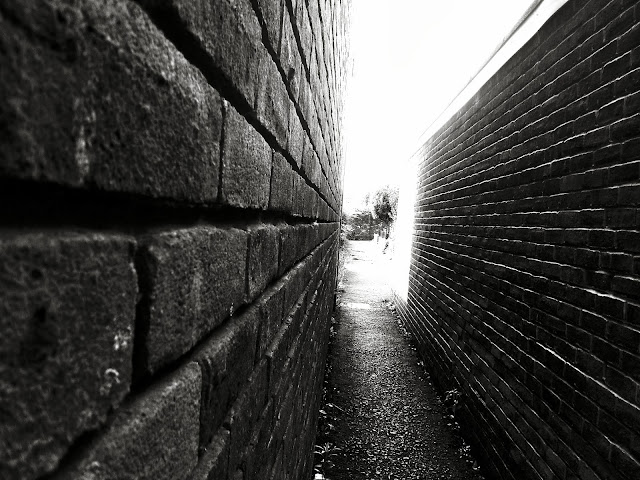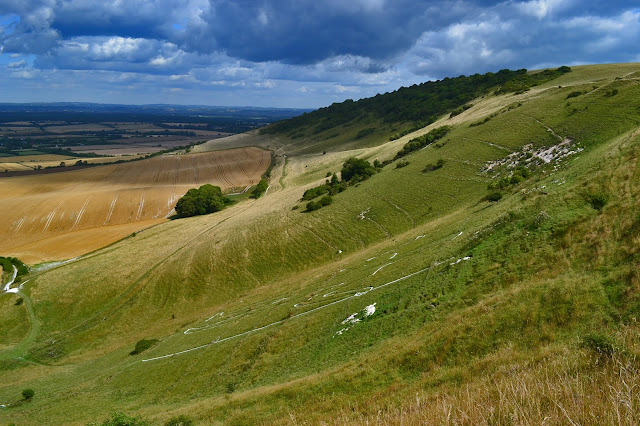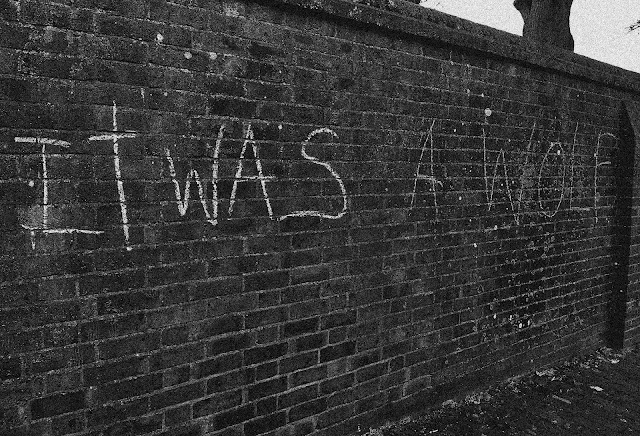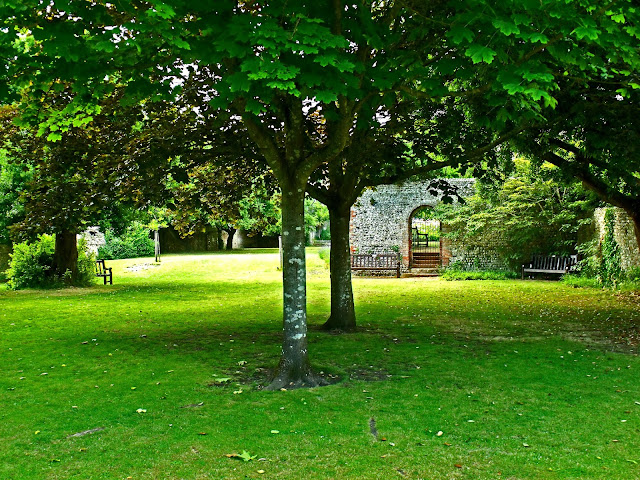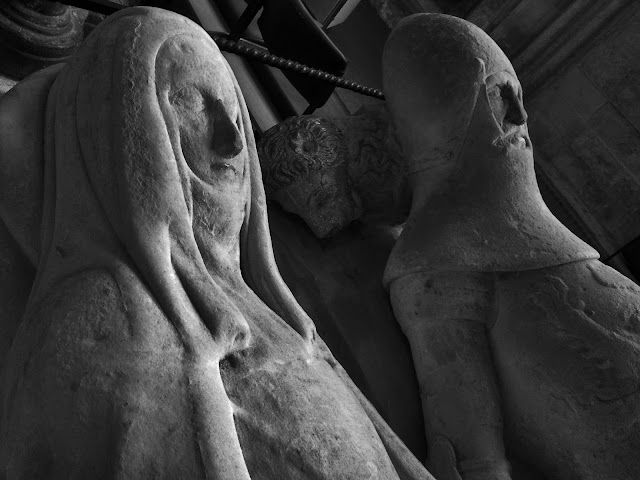Monday 30 September 2013
Thursday 26 September 2013
Sunday 22 September 2013
Thursday 19 September 2013
Monday 16 September 2013
Thursday 12 September 2013
The Long Man of Wilmington
The Long Man of Wilmington: the mysterious guardian of the South Downs, who has baffled archaeologists and historians for hundreds of years.
http://sussexpast.co.uk/properties-to-discover/the-long-man
Until recently, it was believed that the earliest record of Europe’s largest representation of the human form was a drawing dated to 1766. The artist was William Burrell, and the drawing was made during his visit to Wilmington Priory, which lies under the steep slopes of Windover Hill, home to the 235 feet high Wilmington Giant. In 1993, however, a new drawing of the Long Man was discovered, made by the surveyor John Rowley in 1710.
The new drawing has confirmed some theories and dispelled others. It suggests that the original figure was a shadow or indentation in the grass rather than a solid line; there were facial features that are no longer visible; the staffs being held were not a rake and a scythe as once described and the head was once a distinctive helmet shape, giving credence to the idea of the figure as a helmeted war-god.
Until the 19th century the Long Man was only visible in certain light conditions and after a light fall of snow, but in 1874 it was marked out in yellow bricks. It is claimed that during this restoration the feet were incorrectly positioned but, despite popular local legend, there is no evidence, historical or archaeological, to suggest that prudish Victorians robbed the Giant of his manhood!
In 1925, the site of the Long Man was given to the Sussex Archaeological Trust (now the Sussex Archaeological Society) by the Duke of Devonshire. During World War II, the figure was painted green to prevent enemy aviators using it as a landmark. In 1969, further restoration took place and the bricks were replaced with pre-cast concrete blocks that are now regularly painted to keep the Long Man visible from many miles away. The terracettes, horizontal ripples in the turf, change constantly as the soil is rolled downhill by weathering and animal activity. Overnight, between 17 June and 18 June 2010 a giant phallus was painted on the Long Man rivalling that of the Cerne Abbas Giant.
The lack of firm historical evidence still leaves many theories abounding about his history. Many Sussex people are convinced that he is prehistoric, other believe that he is the work of an artistic monk from the nearby Priory between the 11th and 15th centuries. Roman coins bearing a similar figure suggest that he belonged to the 4th century AD and there may be plausible parallels with a helmeted figure found on Anglo-Saxon ornaments.
Fertility symbol? Ancient Warrior? Early 18th century folly? We may never know. Until such time as new evidence is unearthed, we shall have to content ourselves with the words of the Rev A A Evans who said, “The Giant keeps his secret and from his hillside flings out a perpetual challenge.”
Tuesday 10 September 2013
Saturday 7 September 2013
Kipling Gardens
The Kipling Gardens were once part of the Elms which was from 1897 – 1902 the home of the writer Rudyard Kipling. Kipling rented the house for 3 guineas a week and it was here that he wrote Stalky & Co, Kim and some of his famous Just So Stories. After Kipling left the house it was rented out to various tenants until it was purchased in 1929 by Sir Roderick Jones, the head of Reuters.
Following Sir Roderick’s death, the house and walled garden became derelict and in 1980 Sir Roderick’s daughter, Laurian, sold the house and the gardens were offered for development. The following year plans were submitted for six new houses with double garages on the site. Incensed at the thought of a housing development on the historic village green, Rottingdean Preservation Society raised £51,000, largely from a bequest, to buy the derelict garden.
During the next three years the walls were renovated, the brick paths laid and the wilderness cleared and planted. In 1986 the Victorian-style series of walled grdens were formally handed over, in trust, to the then Brighton Borough Council to maintain in good order as an ornamental garden for the benefit of the villagers and other visitors. The Preservation Society continues to take a keen interest in the Gardens and contributes financially to special projects.
http://www.rottingdeanpreservationsociety.org.uk/the-kipling-gardens/
“This is a brief life, but in its brevity it offers us some splendid moments, some meaningful adventures.”
“There is no sin so great as ignorance. Remember this.”
― Rudyard Kipling, Kim
Tuesday 3 September 2013
An Arundel Tomb
Among the many interesting monuments in the Chichester Cathedral is the fourteenth century table tomb on which lie the effigies of Richard Fitzalan Earl of Arundel (1313-1376), and his second wife Eleanor of Lancaster (1318-1372), holding hands. This is the tomb which inspired the poet Philip Larkin to write his poem : 'An Arundel Tomb'.
An Arundel Tomb
Side by side, their faces blurred,
The earl and countess lie in stone,
Their proper habits vaguely shown
As jointed armour, stiffened pleat,
And that faint hint of the absurd -
The little dogs under their feet.
Such plainness of the pre-baroque
Hardly involves the eye, until
It meets his left-hand gauntlet, still
Clasped empty in the other; and
One sees, with a sharp tender shock,
His hand withdrawn, holding her hand.
They would not think to lie so long.
Such faithfulness in effigy
Was just a detail friends would see:
A sculptor's sweet commissioned grace
Thrown off in helping to prolong
The Latin names around the base.
They would no guess how early in
Their supine stationary voyage
The air would change to soundless damage,
Turn the old tenantry away;
How soon succeeding eyes begin
To look, not read. Rigidly they
Persisted, linked, through lengths and breadths
Of time. Snow fell, undated. Light
Each summer thronged the grass. A bright
Litter of birdcalls strewed the same
Bone-littered ground. And up the paths
The endless altered people came,
Washing at their identity.
Now, helpless in the hollow of
An unarmorial age, a trough
Of smoke in slow suspended skeins
Above their scrap of history,
Only an attitude remains:
Time has transfigures them into
Untruth. The stone fidelity
They hardly meant has come to be
Their final blazon, and to prove
Our almost-instinct almost true:
What will survive of us is love.
The earl and countess lie in stone,
Their proper habits vaguely shown
As jointed armour, stiffened pleat,
And that faint hint of the absurd -
The little dogs under their feet.
Such plainness of the pre-baroque
Hardly involves the eye, until
It meets his left-hand gauntlet, still
Clasped empty in the other; and
One sees, with a sharp tender shock,
His hand withdrawn, holding her hand.
They would not think to lie so long.
Such faithfulness in effigy
Was just a detail friends would see:
A sculptor's sweet commissioned grace
Thrown off in helping to prolong
The Latin names around the base.
They would no guess how early in
Their supine stationary voyage
The air would change to soundless damage,
Turn the old tenantry away;
How soon succeeding eyes begin
To look, not read. Rigidly they
Persisted, linked, through lengths and breadths
Of time. Snow fell, undated. Light
Each summer thronged the grass. A bright
Litter of birdcalls strewed the same
Bone-littered ground. And up the paths
The endless altered people came,
Washing at their identity.
Now, helpless in the hollow of
An unarmorial age, a trough
Of smoke in slow suspended skeins
Above their scrap of history,
Only an attitude remains:
Time has transfigures them into
Untruth. The stone fidelity
They hardly meant has come to be
Their final blazon, and to prove
Our almost-instinct almost true:
What will survive of us is love.
PHILIP LARKIN
Subscribe to:
Posts (Atom)



